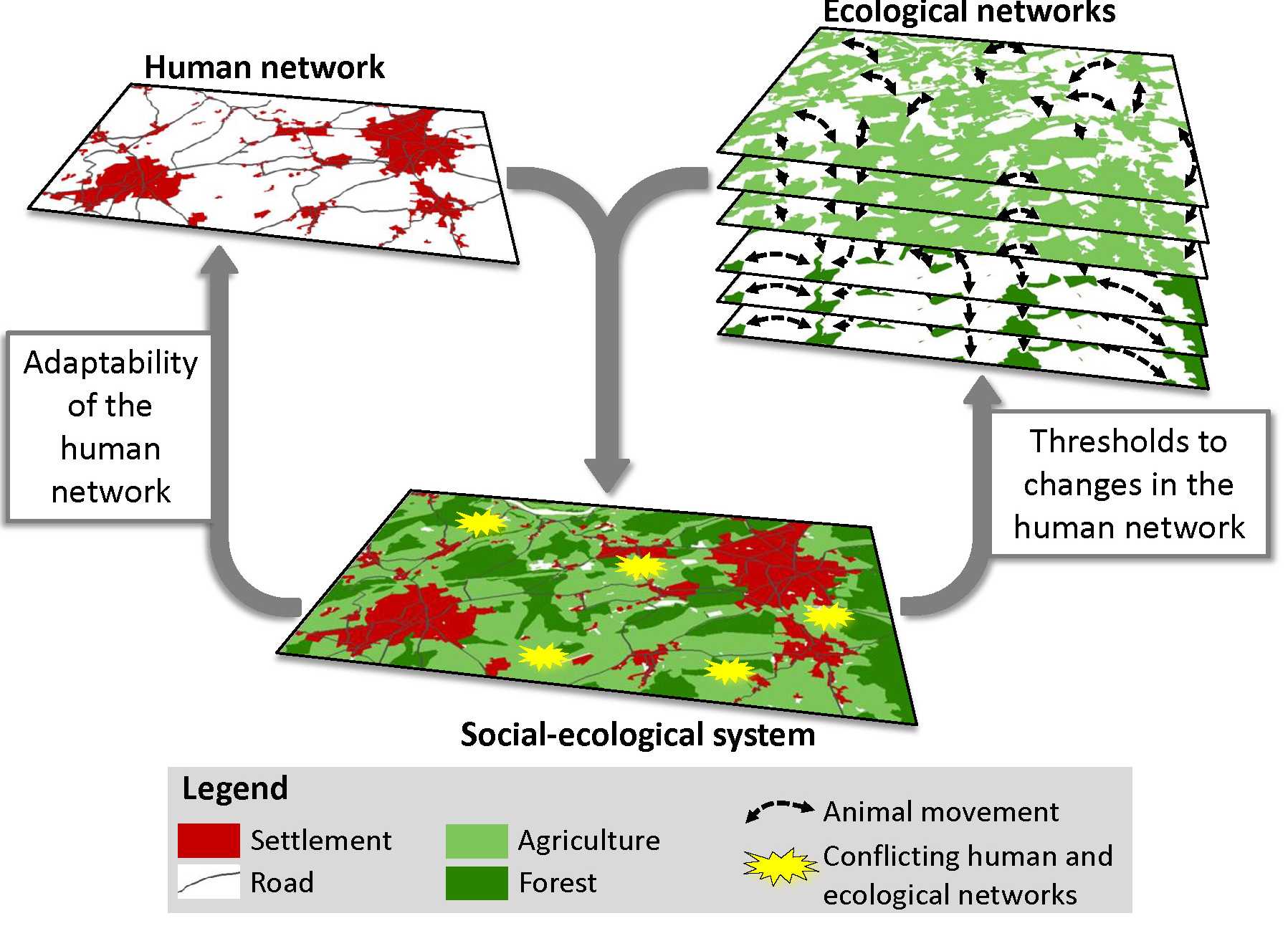Checnet
Coupling human and ecological networks for sustainable landscape and transport planning

Human networks, consisting of settlements and roads, are often a threat to the integrity of ecological networks, in which natural habitats are connected with one another. Well-connected ecological networks are necessary to ensure biodiversity and well-functioning ecosystems. On the one hand, most ecosystems have the capacity, up to a certain threshold, to absorb human-made changes and maintain their functioning. On the other hand, human societies have the ability to adapt their land-use or behaviour, to ensure that these ecosystem thresholds are not reached. Due to the complex interactions and trade-offs within and between human and ecological networks, it is difficult to determine how land use and transportation changes will effect biodiversity and what changes are necessary to prevent biodiversity loss. Therefore, the CHECNET project aims to discover thresholds to land-use and traffic changes in ecological networks as well as to determine likely changes in a human network as a result of biodiversity conservation measures. We do so by coupling human and ecological networks in the densely populated Swiss Plateau. The project consists of three work-packages.
The first work-package focusses on developing a method to construct ecological networks from readily available animal occurrence data making use of habitat suitability modelling and spatial network analyses. Variables from the human network (e.g. traffic intensity, distance to settlements) will be used as explanatory variables in the construction of the ecological networks. This will allow us to study how the ecological networks react to changes in the human network.
In the second work-package we conduct a survey amongst the Swiss population to find trade-offs between biodiversity conservation measures and residential, transport and route choices. The results of the survey will be implemented in the land-use transport model FaLC, which will subsequently be used to make spatially explicit predictions of how settlement development and traffic flows may change as a result of measures focussed on protecting biodiversity.
The results of the first two work-packages will be combined in the third work-package, in which a full coupling of ecological and human networks is performed by iteratively switching between the models to create a chain of actions and reactions between the networks. This sequence of model runs will determine whether human networks can adapt to prevent thresholds in the ecological networks from being reached.
This project will not only result in important scientific advances in spatial ecology as well as landscape and transport planning, but is also of high relevance to the now starting process of implementing ecological infrastructure into Swiss landscapes.
Project data
Persons involved
Financer
Swiss National Science Foundation - Interdisciplinary projects
Duration
01.2016 - 01.2020
Contact
Publications
- Ortiz-Rodríguez DO, Guisan A, Holderegger R, van Strien MJ, (2019) Predicting species occurrences with habitat network models. Ecology and Evolution 9: 10457–10471. DOI: 10.1002/ece3.5567 external page Download
- Khiali-Miab A, van Strien MJ, Axhausen KW, Grêt-Regamey A, (2019) Combining urban scaling and polycentricity to explain socio-economic status of urban regions. PLOS One 14: e0218022 external page Download
- Van Strien MJ, Axhausen KW, Dubernet I, Guisan A, Grêt-Regamey A, Khiali-Miab A, Ortiz-Rodríguez DO, Holderegger R (2018) Models of coupled settlement and habitat networks for biodiversity conservation: conceptual framework, implementation and potential applications. Frontiers in Ecology and Evolution, 6: 41 external page Download
- Van Strien MJ (2017) Consequences of population topology for studying gene flow using link-based landscape genetic methods. Ecology and Evolution 7: 5070–5081 external page Download
- Milanesi P, Breiner FT, Puopolo F, Holderegger R (2017) European human-dominated landscapes provide ample space for the recolonization of large carnivore populations under future land change scenarios. Ecography 40: 1359-1368 external page Download
- Van Strien MJ, Grêt-Regamey A (2016) How is habitat connectivity affected by settlement and road networkconfigurations? Results from simulating coupled habitat and humannetworks. Ecological Modelling, 342, 186-198 external page Download
